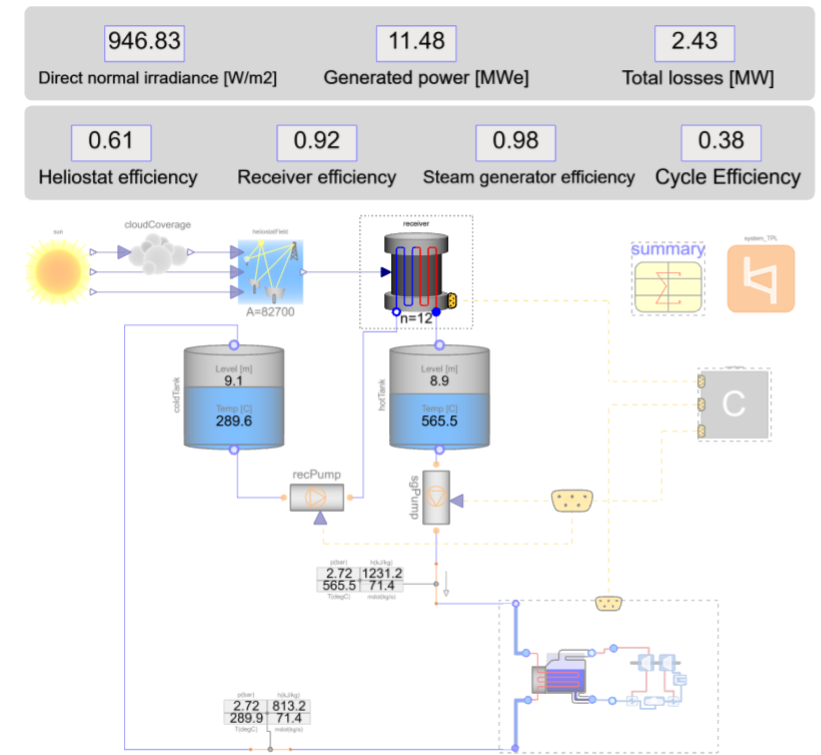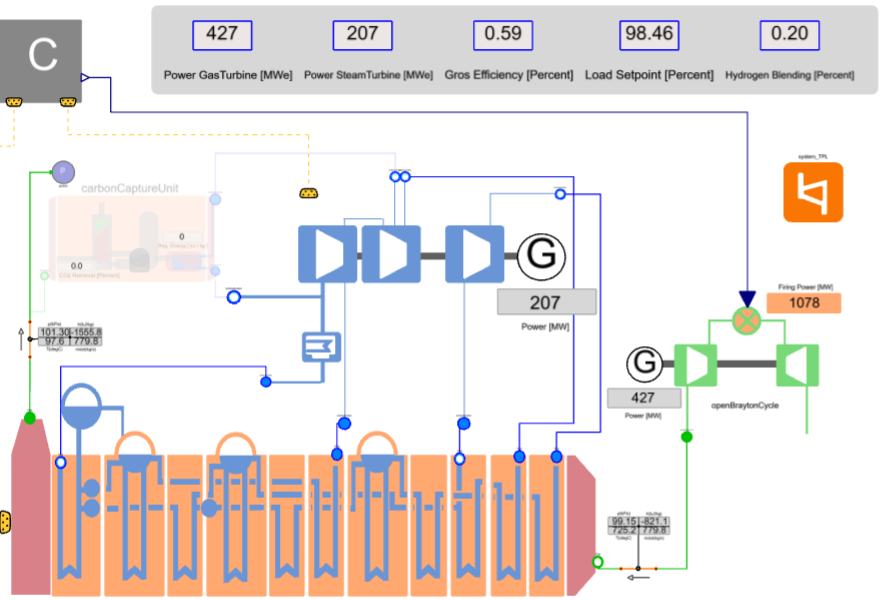Design Thermal Power Cycles and its Components🔗
Thermal power plants are a major source of electricity and heat production worldwide. Due to changing markets and higher share of fluctuating energy production, the requirements to thermal power plants has changed over the years. A static design process is no longer sufficient to cover the expected operation of a system but instead needs to take dynamic scenarios in the design phase into account
Challenge 1: Renewables Integration - or How to Convert a Fluctuating Energy Source into a Plannable Energy Producer
Commonly used Rankine cycle based power blocks are open to any kind of thermal energy source. They are used in combination with nuclear fission reactors, fossil fuel combustion chambers and solar thermal receivers. In the latter case the integration of the fluctuating energy input into a market opens a number of technical and economical degrees of freedom that need early-on understanding of its implications on market success. Technical Paper on Solar Receiver Power Plant Modeling

Challenge 2: Hydrogen Utilization or How to Reduce the Carbon Footprint of a Combined Cycle Power Plant
Hydrogen is widely considered a key for CO2 neutral generation of heat and power. One application is to blend green hydrogen to the fuel feed of an existing combined power plant to reduce it's CO2 footprint. This imposes changes in the downstream temperature profile in the heat recovery steam generator and thus the performance of the steam-driven power cycle. Infographic on Hydrogen Technology On-Demand Webinar on Hydrogen Technology

Challenge 3: Safe Failure Handling or How to Master Unforeseen Damages without Ending in a Desaster
The safe handling of failures is crucial to prevent damages and higher economic losses in case of a trip of technical equipment. The sudden nature of trips and its dynamic implications on the system require a deep understanding and beforehand design and testing of the safety concepts and equipment.
Challenge 4: Industrial Heat Pump Design or How to Fit a Modular Technology into Your Unique Industry Site
Integrating MW-sized heat pumps in district heating grids is not a one-size-fits-all task. Instead, local boundary conditions, required temperature levels an other local heat producers affect the design of the system
Case Study on Heat Pump Application
